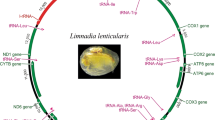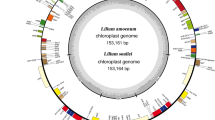Abstract
The mitochondrial cytochrome b gene ofLarus argentatus, L. fuscus andL. cachinnans michahellis was amplified by PCR and partially sequenced. Sequence analysis by PAUP 3.1 indicated thatL. argentatus andL. cachinnans are genetically distinct and separated by 2% base exchanges.L. cachinnans seems to be closer related toL. fuscus than toL. argentatus. The three taxa represent a superspecies. Our data imply that gene flow between the 3 gull species must be negligible and furthermore, that they represent rather young species which may have split 100 000–500 000 years ago. The recognition ofL. cachinnans as a distinct species is supported by molecular evidence.
Zusammenfassung
Ein Teilstück des mitochondriellen Cytochrom-b Gens vonLarus argentatus, L. cachinnans michahellis undL. fuscus wurde mittels PCR amplifiziert und sequenziert. Der Sequenzvergleich mittels PAUP 3.1 zeigt, daß Weißkopfmöwe und Silbermöwe genetisch klar getrennt sind und sich durch 2% Basenaustausche unterscheiden. Weißkopf- und Heringsmöwe stehen sich näher als Weißkopf- und Silbermöwe. Diese 3 Möwenarten unterliegen keinem signifikanten Genfluß und bilden vermutlich eine Superspezies. Aus der Dimension der Basenaustausche kann man schätzen, daß es sich um relativ junge, vielleicht 100 000–500 000 Jahre alte Taxa handeln muß. Die Abtrennung vonL. cachinnans als eigene Art ist molekulargenetisch demnach gerechtfertigt.
Similar content being viewed by others
Literatur
Arctander, P. (1988): Comparative studies on avian DNA by restriction fragment length polymorphism analysis: convenient procedures based on blood samples from live birds. J. Orn. 129: 205–216.
Cramp, S., &K. E. L. Simmons (1983): Handbook of the birds of Europe, the Middle East and North Africa. Bd. 3, Oxford.
Desjardins, P., &R. Morais (1990): Sequence and gene organisation of the chicken mitochondrial genome. J. Mol. Biol. 212: 599–634.
Glutz von Blotzheim, U. N., &K. M. Bauer (1982): Handbuch der Vögel Mitteleuropas. Bd. 8. Charadriiformes. Wiesbaden.
Hillis, D. M., &C. Moritz (1990): Molecular systematics. Sunderland.
Hoelzel, A. R. (1992): Molecular genetic analysis of populations. Oxford.
Kocher, T. D., W. K. Thomas, A. Meyer, S. V. Edwards, S. Pääbo, F. X. Villablanca &A. C. Wilson (1989): Dynamics of mitochondrial DNA evolution in animals: amplification and sequencing with conserved primers. Proc. Natl. Acad. Sci. USA 86: 6196–6200.
Sanger, F., S. Nicklen &A. R. Coulson (1977): DNA-sequencing with chain-terminating inhibitors. Proc. Natl. Acad. Sci. USA. 74: 5463–5467.
Seibold, I., A. J. Helbig &M. Wink (1993): Molecular systematics of falcons (family Falconidae). Naturwiss. 80: 87–90.
Steward C.-B. (1993): The powers and pitfalls of parsimony. Nature 361: 603–607.
Swofford D. L. (1993): PAUP: Phylogenetic analysis using parsimony, Version 3.1s. Illinois Nat. Hist. Survey, Champaign.
Wilson, A. C., H. Ochman, &E. M. Prager (1987): Molecular time scale for evolution. Trends Genetics 3: 241–247.
Wink, M., P. Heidrich, U. Kahl, I. Swatscheck, H.-H. Witt &D. Ristow (1993): Inter- and intraspecific variation of the nucleotide sequence of the cytochrome b gene in Cory's (Calonectris diomedea), Manx shearwater (Puffinus puffinus) and the Fulmar (Fulmarus glacialis). Z. Naturforsch. 48e: 504–509.
Author information
Authors and Affiliations
Rights and permissions
About this article
Cite this article
Wink, M., Kahl, U. & Heidrich, P. Lassen sich Silber-, Weißkopf- und Heringsmöwe (Larus argentatus, L. cachinnans, L. fuscus) molekulargenetisch unterscheiden?. J Ornithol 135, 73–80 (1994). https://doi.org/10.1007/BF01640276
Published:
Issue Date:
DOI: https://doi.org/10.1007/BF01640276




